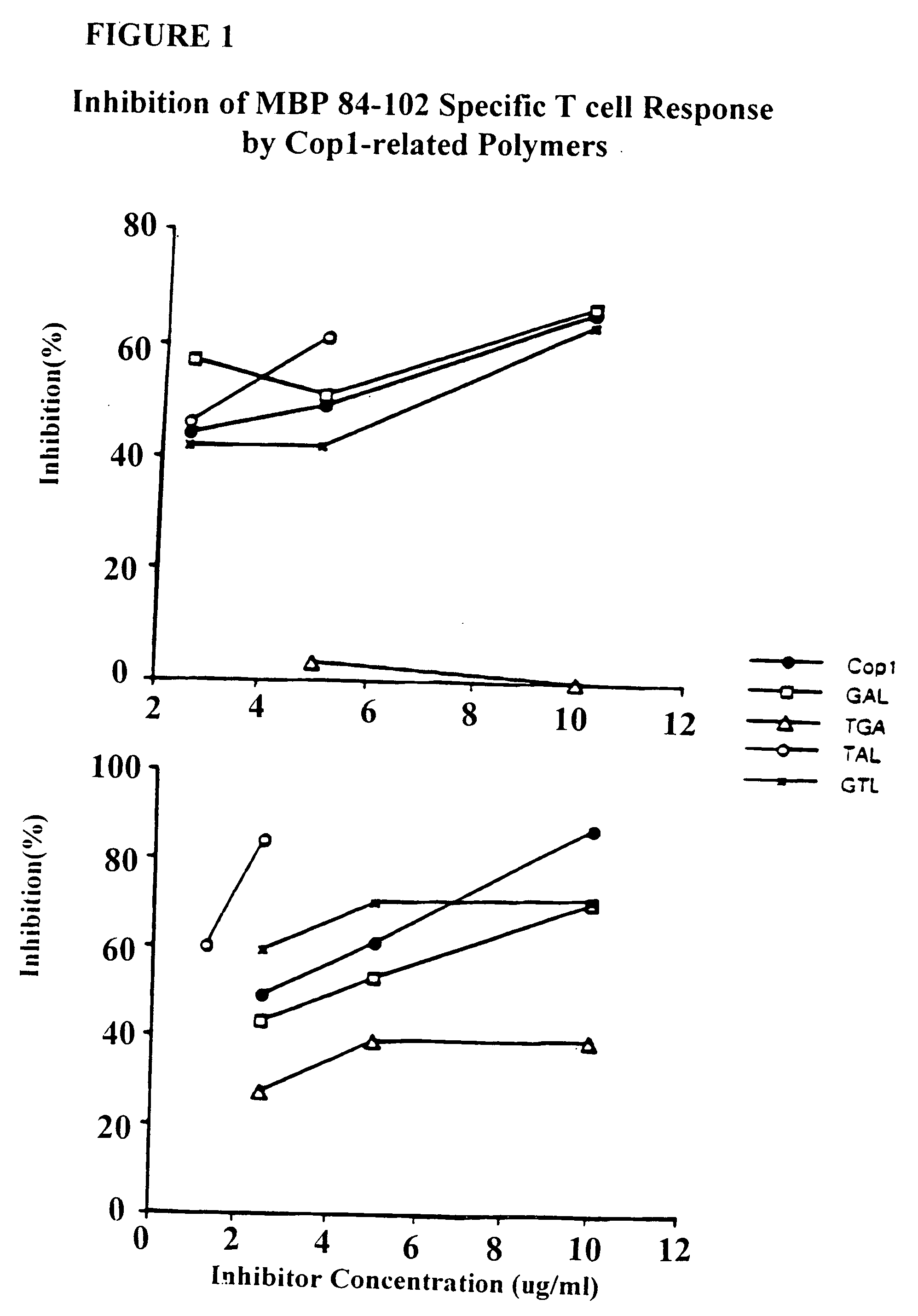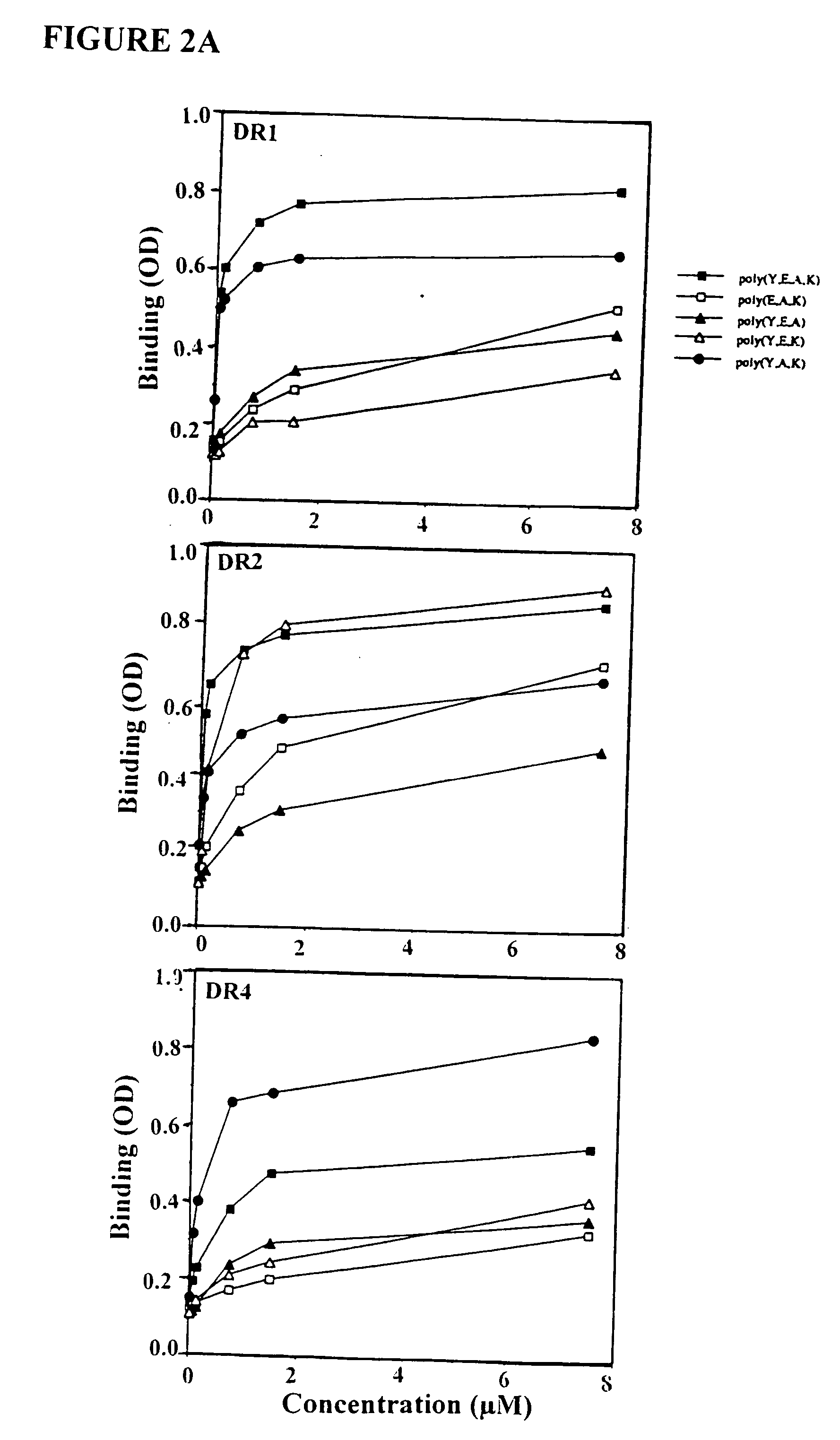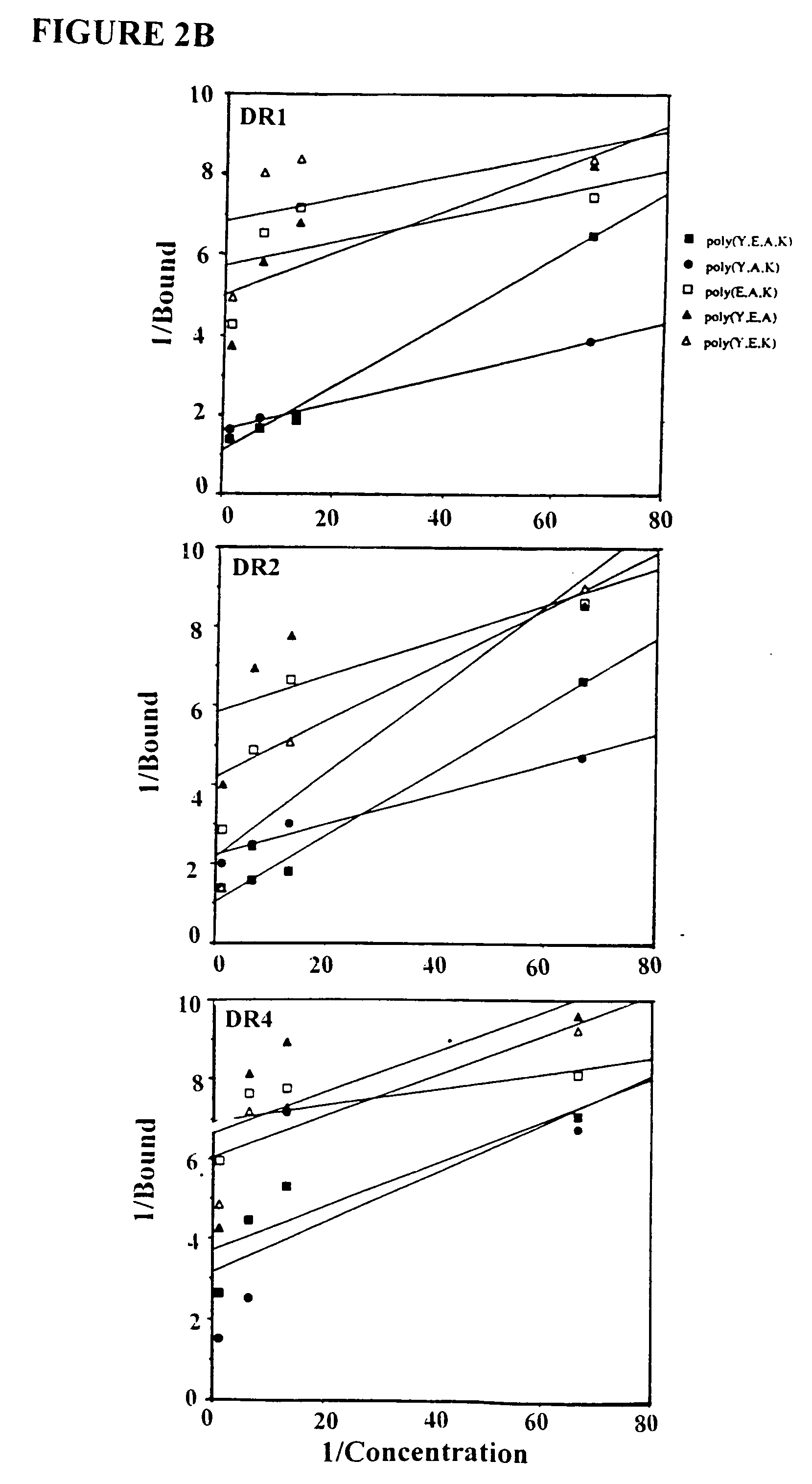Treatment of autoimmune conditions with Copolymer 1 and related Copolymers
a technology of autoimmune conditions and copolymer, which is applied in the field of treating autoimmune conditions with copolymer 1 and related copolymers, can solve the problems of limiting the effectiveness of drugs, limiting the long-term treatment of autoimmune diseases, and difficult production of therapeutic compositions containing natural folded proteins, etc., to achieve the effects of preventing autoimmune diseases, blocking immune cell recognition and attack, and stimulating the growth and function of copolymer 1-specific t cells
- Summary
- Abstract
- Description
- Claims
- Application Information
AI Technical Summary
Benefits of technology
Problems solved by technology
Method used
Image
Examples
example i
Preparation of Polypeptides
Preparation of Protected Polypeptides
[0100] Protected polypeptides are prepared as described by Teitelbaum et al., using the N-carboxyanhydride (NCA) blocked amino acids tyrosine, alanine, glutamic acid and trifluoroacetyllysine dissolved in dioxane. 1 EUR. J. IMMUN. 242 (1971). The carboxylate group on glutamic acid is blocked with a benzyl (BZ) group.
[0101] The polymerization process is initiated by the addition of 0.01-0.02% diethylamine. The reaction mixture is stirred at room temperature for 20 hours and then poured into water. The protected polypeptide product is filtered, washed with water and dried. The removal of the y-benzyl blocking groups from the glutamate residue is carried out by treating the protected polypeptide with 33% hydrobromic acid in glacial acetic acid at room temperature for 6-12 hours with stirring. The product is poured into excess water, filtered, washed and dried, yielding the protected polypeptide.
Preparing Polypeptides...
example 2
Low Molecular Weight Polypeptides
In Vivo Tests
[0124] Three batches of copolymer-1 having an average molecular weight of 7.3 and 8.4 KDa (less than 2.5% copolymer-1 species over 40 KDa) and 22 KDa (more than 5% copolymer-1 species over 40 KDa) were subjected to the toxicity test described below. Five mice were used in each experimental group.
Method
[0125] Copolymer-1 is dissolved in distilled water to yield a solution of 2 mg / ml of the active ingredient. Each mouse is injected with 0.5 ml of the test solution into the lateral tail vein. Mice were observed for mortality and relevant clinical signs over a 48 hour period. Observations were recorded 10 minutes, 24 hours and 48 hours post-injection. If, at the end of 48 hours, all the animals were alive and no adverse signs had been observed, then the batch is designated “non-toxic”. If, however, one or more of the mice had died or had shown adverse signs, then the batch is designated “toxic”.
Results
[0126] Three of five mice died ...
example 3
Suppression of EAE by the Polypeptides
[0132] Injection of Copolymer 1 in incomplete Freund's adjuvant before disease induction can suppress experimental allergic encephalomyelitis (EAE). This suppression appears to be mediated by Copolymer 1-specific suppressor T cells of the TH2 type which cross react with myelin basic protein. Lando et al., 123 J. IMMUNOL. 2156 (1979); Aharoni et al., 17 EUR. J. IMMUNOL. 23 (1993); Aharoni et al., 94 PROC. NATL. ACAD. SCI. USA 10821 (1997). Other researchers have observed that the therapeutic effect of Copolymer 1 in multiple sclerosis patients is also associated with the induction of TH2 cells. Lahat et al., 244 J. Neurol. 129 (1997). In this example, EAE is suppressed to by different polypeptides of the present invention.
Methods
Copolymer 1
[0133] Copolymer 1 batches # 02095 and 55495, with average molecular weights of 6000 Da and 5800 Da, respectively, were obtained from Teva Pharmaceutical Industries (Petach Tikva, Israel).
Terpolymers
[0...
PUM
| Property | Measurement | Unit |
|---|---|---|
| average molecular weight | aaaaa | aaaaa |
| average molecular weight | aaaaa | aaaaa |
| average molecular weight | aaaaa | aaaaa |
Abstract
Description
Claims
Application Information
 Login to View More
Login to View More - R&D
- Intellectual Property
- Life Sciences
- Materials
- Tech Scout
- Unparalleled Data Quality
- Higher Quality Content
- 60% Fewer Hallucinations
Browse by: Latest US Patents, China's latest patents, Technical Efficacy Thesaurus, Application Domain, Technology Topic, Popular Technical Reports.
© 2025 PatSnap. All rights reserved.Legal|Privacy policy|Modern Slavery Act Transparency Statement|Sitemap|About US| Contact US: help@patsnap.com



